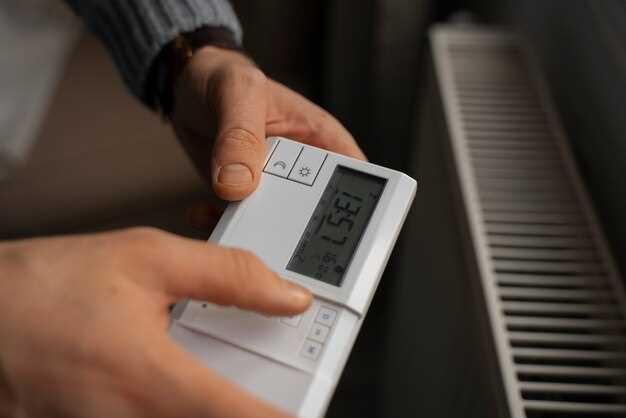
What a thermostat does and when to replace it
- Dominique Kaye
- 0
- Posted on

Thermostats play a crucial role in the heating systems of modern homes, ensuring that the engine of your heating system operates efficiently. They act as the control center, monitoring temperatures and regulating heat output to maintain a comfortable living environment. Understanding how thermostats function and recognizing the signs that indicate a need for replacement can save you time, money, and unneeded discomfort.
A thermostat communicates with the heating system by signaling when to turn on or off, thereby maintaining the desired temperature set by the homeowner. However, like any mechanical device, thermostats are not immune to wear and tear. Over time, components can malfunction or become less effective, causing irregular heating patterns or complete system failure.
Recognizing the early symptoms of a failing thermostat is essential for preventing more significant issues down the line. Common signs include inconsistent temperatures throughout the home, the heating system running continuously without reaching the set temperature, or frequent cycling on and off. Understanding these indicators can empower homeowners to take proactive measures, ensuring that their heating systems remain effective and efficient.
Identifying Symptoms of a Failing Engine Thermostat

The engine thermostat plays a crucial role in maintaining the optimal operating temperature of your vehicle’s engine. When it begins to fail, various symptoms can arise, indicating the need for attention or replacement.
One of the most common signs of a failing engine thermostat is the engine overheating. If the thermostat is stuck in a closed position, it restricts the flow of coolant, leading to excessive heat buildup within the engine. This can cause significant damage if not addressed promptly.
Another symptom is inconsistent temperature readings on the dashboard gauge. A malfunctioning thermostat may cause the temperature gauge to fluctuate erratically or remain at an abnormal level, either too high or too low, indicating improper engine temperature regulation.
Moreover, you may notice a decrease in engine performance, such as reduced fuel efficiency or sluggish acceleration. An engine that is not operating within its ideal temperature range may struggle to achieve optimal combustion, resulting in inefficient fuel usage.
Additionally, if you observe coolant leaking around the thermostat housing, this could signify a failure. This leakage can occur due to a worn-out gasket or seal, often linked to a faulty thermostat.
Finally, strange noises, such as gurgling or bubbling sounds, can indicate trapped air within the cooling system, typically caused by an ineffective thermostat. This condition can lead to air pockets forming, further contributing to overheating issues.
Being aware of these symptoms can help you take prompt action, preventing potential engine damage and ensuring your vehicle runs efficiently.
Evaluating Engine Heat Performance Related to Thermostat Issues

The thermostat plays a critical role in regulating the engine’s heat performance. As the engine runs, it generates heat, and the thermostat ensures that this heat is maintained within an optimal range. If the thermostat malfunctions, the engine may either overheat or run too cool, leading to various performance issues.
One of the most apparent signs of thermostat failure is inconsistent engine temperature readings. Drivers may notice that the temperature gauge fluctuates unexpectedly, indicating that the thermostat is not properly opening or closing. This erratic behavior can cause the engine to overheat, resulting in severe damage if left unaddressed.
In contrast, if the thermostat stays open, the engine may not reach the ideal operating temperature. This can lead to inefficient combustion and increased fuel consumption. Engines running too cool can also cause longer warm-up times and produce higher emissions, adversely affecting overall vehicle performance.
To evaluate the engine heat performance related to thermostat issues, it is essential to monitor temperature changes during various driving conditions. A well-functioning thermostat should allow the engine to reach its optimal heat level quickly and maintain it consistently. If there are significant deviations from this behavior, it signals the need for further inspection or replacement.
Regular maintenance checks can help identify potential thermostat issues before they escalate. Owners should be aware of the warning signs, such as engine overheating, fluctuating temperature gauges, or unexpected coolant loss. Addressing these issues promptly can enhance engine performance and longevity.
Steps to Replace a Faulty Thermostat in Your Vehicle
Replacing a faulty thermostat in your vehicle is essential to ensure that the engine maintains its optimal operating temperature. A malfunctioning thermostat can lead to overheating or underheating, causing serious engine damage. Follow these steps to replace it effectively.
1. Gather Necessary Tools and Materials
Before starting the replacement, collect all required tools and materials. You will need a new thermostat, a gasket or sealant, a wrench set, and a screwdriver. Additionally, keep a container handy to catch any leaking coolant.
2. Allow the Engine to Cool
Before working on the thermostat, ensure that the engine is completely cool to avoid burns or injuries. If the vehicle has recently been driven, wait several hours for it to cool down.
3. Locate the Thermostat
The thermostat is usually located near the engine’s upper radiator hose where it connects to the engine block. Refer to your vehicle’s manual for exact location details.
4. Drain the Coolant
To avoid spills, drain a portion of the coolant from the radiator. Locate the drain plug at the bottom of the radiator and carefully open it. Make sure to catch the coolant in your container.
5. Remove the Thermostat Housing
Using your wrench, remove the bolts securing the thermostat housing. Gently lift the housing to expose the thermostat. Take care not to damage any connected hoses.
6. Replace the Old Thermostat
Once exposed, carefully remove the old thermostat. Take note of its orientation for proper installation of the new one. Install the new thermostat in the same position, ensuring a snug fit.
7. Reattach the Thermostat Housing
Position the thermostat housing back in place and secure it with bolts. Be cautious not to overtighten, as this can lead to damage or leaks.
8. Refill the Coolant
After securing the thermostat housing, refill the radiator with the appropriate coolant. Follow the manufacturer’s recommendations for the correct type and mixture.
9. Check for Leaks
Start the engine and allow it to reach operating temperature. Inspect around the thermostat housing for any leaks. If there are no leaks, you have successfully replaced the thermostat.
10. Dispose of Old Materials Properly
Finally, dispose of the old thermostat and any contaminated coolant in accordance with local regulations to ensure environmental safety.
